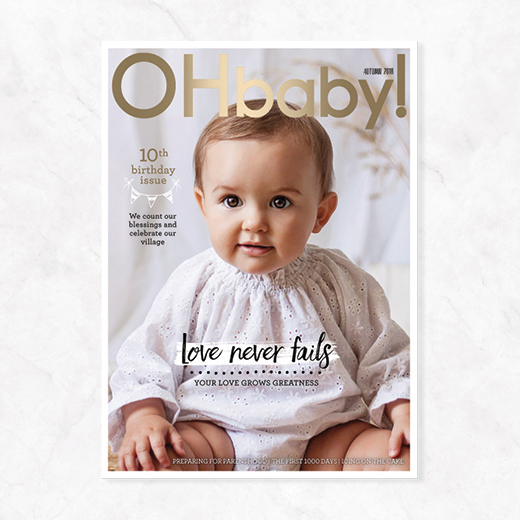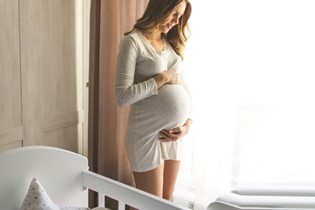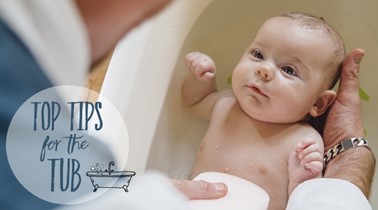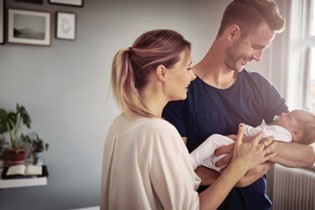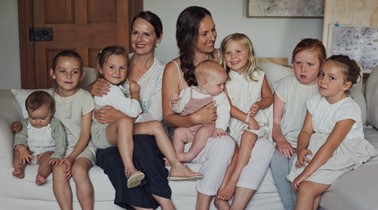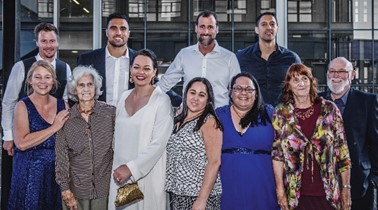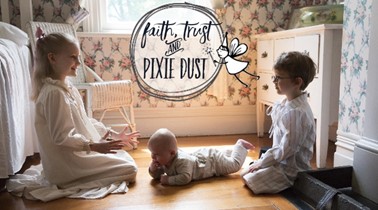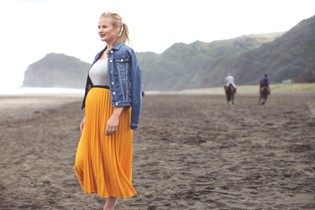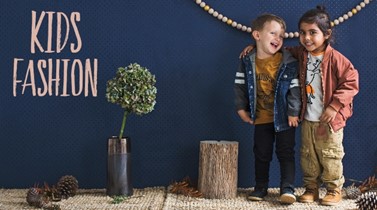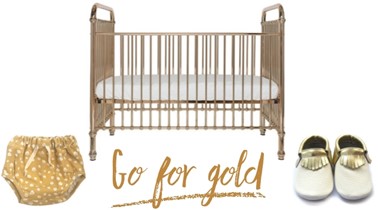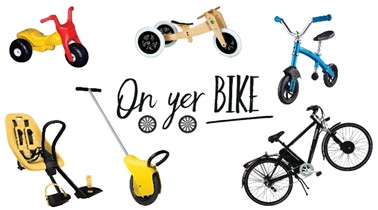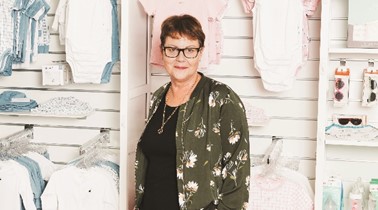Top tips for the tub
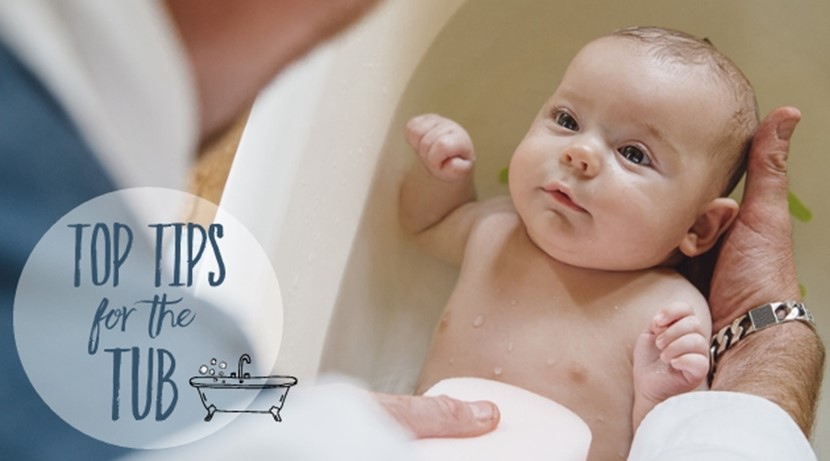
Dorothy Waide reflects on bath time as a bonding opportunity and comes clean about baby skincare.
I love bath time with babies. It’s a time when you’re doing something that isn’t about feeding, burping or trying to get your baby to sleep. I encourage parents to look at bath time not as a chore but as a moment to cherish, when you can connect with your baby on a different level.
Baths automatically have a relaxing effect on all ages. If you’re having issues with feeding a baby, there’s nothing more relaxing than hopping into the bath and doing skin-to-skin and feeding in there. It’s lovely to see this family moment. Quite often the baby who is fighting the breast or bottle will calmly latch and enjoy their milk.
When I first trained as a Karitane Mothercraft nurse, we tended to bath the baby at the 10am feed, which would normally be the second feed of the day. However, I quickly learnt that to have a baby bathed at the end of the day helps with the evening routine, and makes a baby sleep better. It also starts them off in a routine that will grow with them as they progress into toddlerhood and through to their preschool and school days. I tend to incorporate baby’s bath time into their last wake cycle of the day, so their wake cycle looks like this:
⭐ Wake
⭐ Feed
⭐ Floor play (while you run the bath)
⭐ Bath
⭐ Feed
⭐ Swaddle
⭐ Bed for the night
Some parents comment that a bath at this time of the day can hype their baby up. If that’s the case, I suggest shortening this wake cycle as it’s normally longer than others, and also shortening the process of bathing as well, as this will help avoid your baby becoming overtired.
Where to bath
I tend to look around the house and often use the hand basin as baby’s first bathtub. This, of course, depends on the size of the hand basin, but it avoids you having to bend over the bath. If you have a family bathtub, and the sides aren’t too high, then this is my next option, but it can be hard leaning over to bath the baby. However if you’re doing a quick bath, this will be manageable.
There are a lot of baby baths on the market, of all different shapes and sizes. You just need to think about where you’re going to put it to bath the baby, and consider the weight of the bath with water in it if you’re going to have to carry it anywhere to empty. Some parents like to shower their babies and this is perfectly fine. I have a video on my website that you can purchase that shows all the different ways of bathing and showering.
Get your ducks in a row
Before the bath, I arrange baby’s clothes in the order in which I’ll put them on. For example, the bottom of the pile is their outer clothes, then the nappy, and on top their bodysuit. Lay out a towel, face cloth and any other bathing products you may need. While doing this, I tend to give the baby nappy-free time. Remember though that the room needs to be warm, not draughty or too hot.
Products for bathing
We all know our babies aren’t dirty, and a bath is just to freshen their bodies up and to wash their ‘smelly’ bits, ie. under the neck (which can get quite crusty with milk if they dribble or spill a lot), armpits, bottom, and of course their face and hair. We all want the best product for our babies. As a new parent, it can be overwhelming with all the marketing that goes on, but it actually comes down to the necessities. For every product I mention, someone will say it’s not right, but I talk from the experience of working with multiple families for over three generations. When looking for baby products, look for a product that has no paraffins or sulphates. I tend to recommend very mild or natural products and some of my favourites are as follows:
⭐ Dimples Organic skin care range
⭐ Made4baby
⭐ Cetaphil
Remember that it’s not the daily bath that can lead to problems with their skin; it’s the length of time that you keep your baby in the bathtub. But babies’ baths don’t need to be long. It takes longer to undress, dry and dress a baby than it does to bath them. If you are going to soak your baby in the bathtub, then I do recommend putting a few drops of olive oil into the water as this will help protect their skin.
Running the bath
I often get asked how deep a baby’s bath should be. I tend to err on the side of safety and run very shallow baths. We’re all different, and as long as you are comfortable with the depth of the water, then it will be fine. The temperature of the water will vary as well. The best way to check this is dipping your elbow into the water. I tend not to add products to the water unless it is oil as a lot of these products can or may dry their skin out. If you are using a product, then ensure you put in the recommended amount rather than just adding what you think is right.
Getting a grip
I like to hold my babies when bathing, as this is another way of connecting with them, rather than using some sort of bathing aid to lay them on in the water. You’ll find your own way to hold your baby in the water, but it’s great to have
a guideline, so this is how I do it. With one arm holding your baby under the back of their neck (ie their neck rests on your inner wrist) and grasping their shoulder, and with your other hand resting under their bottom, lower your baby into the water. Once your baby is in the water you then remove the hand that was under their bottom. For babies who don’t like the water, I suggest placing a warm cloth on their tummy as this tends to calm them.
If you’re bathing in the family bathtub, I lay babies on their back, so your baby is free-floating in the water. The water level is shallow for this.
Drying off
When drying your baby, it is important not to rub their skin but to pat them dry. It’s also important to remember to get into the creases under their neck, elbows, knees and bottoms. If your baby is red or smelly in any of these areas, I suggest using Curash Anti Rash Powder. When putting this on, remember not to just sprinkle it on and leave it, but to rub it gently into their skin, and to open up their creases so that you’re putting the powder on their inner creases as well.
Baby massage
Some parents like to massage their baby after every bath. However, for me, massage is touch, and you’re touching your baby all day, so if you can’t manage this, don’t worry about it. For massage I recommend Dimples Baby Massage Oil and Tui Balms – I tend not to use straight almond oil.
How do you massage? Just go for it and do what you feel is right – I tend to start from the shoulders and work from there. There’s no right or wrong way, but remember – not too long or too hard, as your baby will be getting tired by now.
To cap it all off
Cradle cap is the common term for seborrhoic dermatitis. Some experts believe that the hormones a baby receives from his mother at the end of the pregnancy overstimulate the baby’s oil-producing glands, which results in cradle cap. It is quite common in newborn babies and up to three-year-olds.
It can be normal for cradle cap to smell, and this is normally due to the excessive sebum production, along with the bacterial and fungus growth that causes it. It smells rather like yeast – get rid of this using a mild shampoo. Cradle cap can also develop when parents just wash their baby’s hair with water. Again, using a mild shampoo will help.
There are many different ways of dealing with cradle cap. In my experience, Vaseline works well. Some parents prefer to avoid Vaseline, but you use what works for you. Another product to use is a paste made of baking soda – this works wonders for some people. I certainly have helped clients avoid using prescription drugs to deal with baby’s cradle cap by doing the following.
|
How to treat cradle cap: ⭐ Leave for a few minutes and then start gently massaging and you should see the flakes start to lift. ⭐ Massage or brush your baby’s hair with a soft brush in circular motions – this is also an effective way to lift the cradle cap. ⭐ Reapply Vaseline or coconut oil throughout the day and repeat the above steps. ⭐ Using a sponge or cloth, wet your baby’s hair thoroughly. Use a very small amount of shampoo (do not squirt this directly onto their hair/scalp), and using your fingers, lightly scrub the scalp especially over the fontanelle area. Then rinse well using a sponge or cloth, ensuring that you are rinsing their scalp as well as their hair. ⭐ When drying your baby’s hair, firmly rub dry ensuring that you’re drying their scalp as well as their hair. Then brush their hair and scalp. Brush in all directions to lift the cradle cap, and also do a lot of circular brushing. Finally, brush their hair to the way you would normally style it. Cradle cap can also occur on baby’s forehead and eyebrows, but just treat it in the same manner you would if it occurred on their head. If your baby has cradle cap behind their ears, ensure that you pat dry between the ear and the scalp and then, ONLY when that area is dry, apply Vaseline or coconut oil. Otherwise the Vaseline or coconut oil will seal in any lingering moisture, and this could potentially lead to a fungal infection. While getting rid of cradle cap, you will need to wash your baby’s hair regularly – every day if possible, or at least every third day. DO NOT PICK the cradle cap off – this could result in the scalp weeping and also could lead to your baby getting an infection at the site. Following the above method will not cure but improve the worse type of cradle cap within 24 hours, and you should see an improvement over the next few days. |

|
Dorothy Waide started her career training as a Karitane Mothercraft nurse in New Zealand in the 1970s and is NZ’s leading sleep expert. Dorothy is the author of You Simply Can’t Spoil a Newborn, and is currently working on her next book, 12 Weeks to Toddlerhood. Find her at babyhelp.co.nz. |

AS FEATURED IN ISSUE 41 OF OHbaby! MAGAZINE. CHECK OUT OTHER ARTICLES IN THIS ISSUE BELOW
